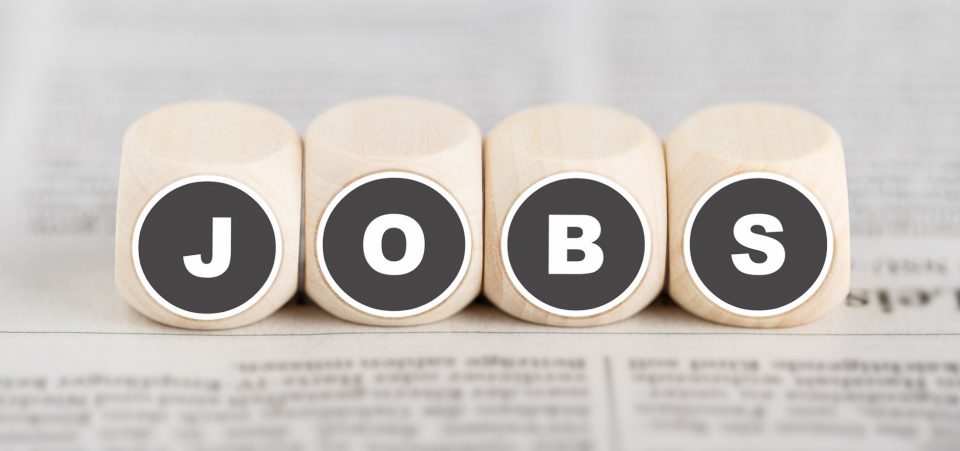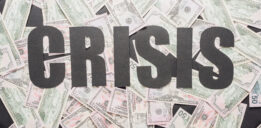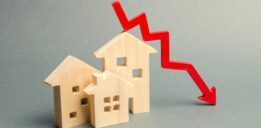The U.S. May Have Added 200,000 Jobs in January, But What Does It Really Mean for the U.S. Economy?
The potential for the Federal Reserve to raise interest rates may have investors panicking on two fronts. Higher interest rates, especially after almost a decade of near-zero costs of borrowing, will cause two overall trends. The first is that bond yields will increase, prompting many investors to sell. The second, similarly, is that equity investors, who borrowed to invest, will also be pulling out. The result is that two bubbles risk bursting as former Fed Chair Alan Greenspan himself noticed. (Source: “Alan Greenspan says there are two bubbles, in stocks and bonds,” MarketWatch, February 1, 2018.)
The effects have arrived promptly. The Dow Jones has started to show signs of weakness, losing over 1,000 points in the week ending on February 2. Of particular note was the fact that some of the biggest gainers in 2017, stocks such as Google—officially Alphabet Inc (NASDAQ:GOOG)—or Apple Inc. (NASDAQ:AAPL) posted numbers that fell below expectations.
Google delivered fourth-quarter gains of $9.70 per share. It’s certainly an enviable result, but in these days of interstellar stock valuations, analysts were expecting something more substantial. Apple, for its part, posted earnings per share that were higher than expected. But, again, analysts needed to see an even better performance to justify the Cupertino-based company’s already exceptional stock price. Apple, apparently, has sold fewer phones than Wall Street would have liked. Nobody should have been surprised, given the higher average price.
Amazon.com, Inc. (NASDAQ:AMZN) remains the king on Wall Street. But, it too started to fall a bit on February 1, dropping from its record high of $1,450 per share to $1,429 per share. Yes, percentage-wise, it’s a negligible amount. But, it’s symptomatic that perhaps, a sense of reality has caught up with investors, who may be thinking a little deeper before they get in any deeper.
Rate Fever Is Taking Over
The motivation behind investors’ newly found caution—if not quite yet aversion—comes from interest rate fears. The next few weeks, if not months, could see a major shift. Individual earnings per share won’t matter as much as meta-factors. And it doesn’t get more meta than interest rates. The latest employment numbers may be good—not great—but they will almost surely force the Fed to act faster than it expected or wanted.
The U.S. jobs report showed significant gains. The American economy created some 200,000 new jobs in January. This beat expectations of around 177,000. The unemployment rate stood at 4.1% for the fourth consecutive month. This is the lowest level since December 2010. This means that it hasn’t quite recovered since the 2008 financial crisis. (Source: “Employment Situation Summary,” Bureau of Labor Statistics, February 2, 2018.)
Note that this does not mean that only 4.1% of people in the U.S. are unemployed. It only means that 4.1% of the labor force is actively seeking employment. Thus, it may look impressive, but it says little about the true state of the economy. Indeed, there are still a staggering 6.7 million unemployed people in the United States. And that doesn’t take into account the much larger number of people who have dropped out of the economy altogether. They have simply stopped looking.
Still, many in the Federal Reserve want to find excuses to justify a rate increase to slow down the overheating equity markets. The one that economists will surely peddle concerns the rise in average wages. Hourly wages have grown year-over-year by 2.9%, which is higher than expected. (Source: “U.S. Adds 200,000 Jobs; Wages Rise by Most Since Recession,” Bloomberg, February 2, 2018.)
The U.S. Jobs Report
The U.S. jobs report indicates that the United States is closer to “maximum employment”—which is not the same as full employment—matching the Federal Reserve’s own goals. The higher wages, say economists, should boost consumption. President Trump’s tax cuts alone were expected to produce that effect. But how can this work?
The Fed will interpret the data—good, though it may be—as a warning that inflation is already lurking. The higher wages, therefore, may simply be matching higher costs for everything from housing to clothing. Because they are deemed too volatile, energy and food costs are not counted in inflation. Yet both have risen considerably. That’s a problem.
Why is it a problem? Because the Federal Reserve will use the jobs data and the higher wages to lift interest rates. This will put all of working America under more financial pressure, hurting consumer confidence. The Conference Board published this ephemeral indicator based on a sample of 5,000 families. It captures the way Americans are feeling about near future conditions from their attitudes toward consumption. (Source: “Consumer Confidence Survey,” The Conference Board, January 30, 2018.)
Well, it turns out that such attitudes are alright, but not great.
Consumer Confidence Could Turn Sour
I suspect that the next Consumer Confidence Survey will be less favorable. The Fed will use the allegedly strong economic data—it’s not all that strong, considering it merely reflects a return to pre-financial crisis conditions—to lift interest rates. Quite apart from the risk this poses to the staggering stock valuations on Wall Street, it will smash any consumer confidence gains achieved in the past few years, regardless of the Trump tax cuts. Indeed, there’s something that all this “favorable” data fails to mention.
One wonders if there’s some deliberate attempt to deceive Americans. For all the talk of consumer confidence and higher wages, nobody is talking about the greedy white elephant in the room, ready to steal your wallet like some Barnum circus act. The elephant has a name: Debt.
Higher interest rates won’t just hurt investors with margin calls and higher interest on loans they’ve taken out to buy into a “great opportunity.” Interest rates, lest we forget, also determine how much Americans will have to pay to use their credit cards, their car loans, and mortgages.
Debt and Its Discontents
Credit card rates are going higher. And they’re already at their highest since 2011. What passes for an economic recovery has actually been a credit-fueled recovery. Credit card balances have risen despite—or perhaps, because of—the crisis. Consider that before the 2007-2008 crash, credit card and revolving loan debt at all commercial banks in the U.S. stood at $329.0 billion. Today, it has more than doubled and is ballooning toward the trillion mark, given that it’s already at $766.09 billion.
We’ve all heard the great news about manufacturing jobs and the revival of the “great American automobile industry,” as President Trump put it during his State of the Union address on January 30.
Americans did not pay cash for the cars that have helped this most traditional manufacturing sector grow. Many have secured special auto loans from independent lenders. The latter will be only too happy to apply higher interest rates. This means that cars will be less affordable, even as companies like Fiat Chrysler Automobiles NV (NYSE:FCAU) are getting ready to invest billions hiring more workers and building new industrial facilities. (Source: “Fiat Chrysler to invest $1 billion in Michigan plant, add 2,500 jobs,” Reuters, January 11, 2018.)
The Federal Reserve claims to be working to achieve a long-awaited, sustained pickup in wages. It wants to see higher demand and more economic expansion. But despite the Trump tax cuts, the cure for inflation—higher interest rates—could compromise any gains. Ironically, the tax cuts may be the factor that will cause the potentially catastrophic rate hike in the first place. Add to that the fact that investors are also worried about the U.S. bond market; higher Fed rates are a harbinger of uncertainty for bonds as well. Investors, fasten your seatbelts. It’s going to be a rough ride.






